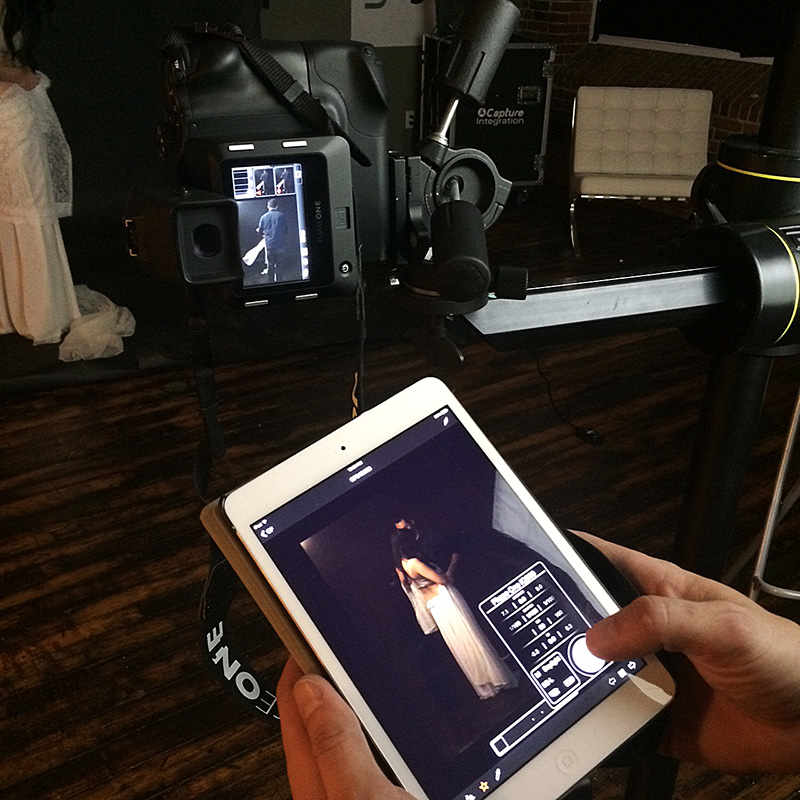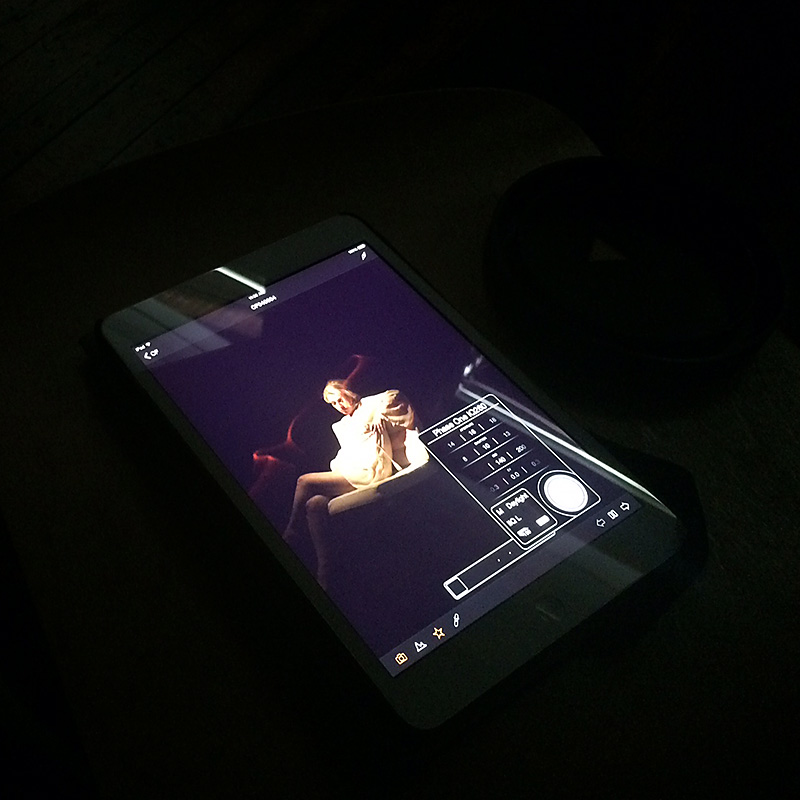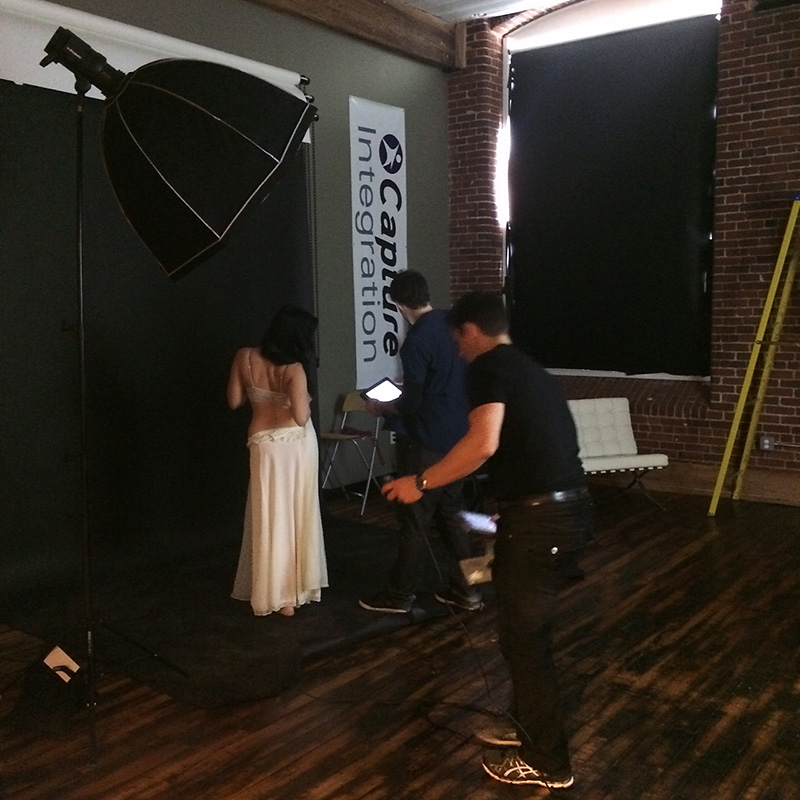Client Spotlight Behind the Scenes with R. J. Kern

When R. J. Kern was looking to upgrade his setup to the latest Phase One IQ260, he knew he wanted to do a few things: long exposures, light painting, and use the wireless functionality of Capture Pilot. We luckily got to host him as he tested out his new gear here in our New England office, with a full art nouveau fashion shoot setup with two models, glow sticks, flashlights, fog machines, and more! Read on for behind the scene pictures, and hear about the experience in R. J.’s own words:



What got you into digital medium format to begin with?
I’ve long been fascinated on the artists choice in choosing the right tools for the job. Our creative tools inspire confidence, which clients appreciate.
When I was 13, I won my first mountain bike race on a single-speed Huffy. Since I didn’t own a mountain bike with fancy gears like the other kids in my race, I ran up the hills pushing my bike instead of mashing gears like the competition. I crossed the finish line first, shocked.
“The bike doesn’t make you go fast, it’s the engine behind it,” I proved to myself.
Turns out, the same is true with expensive camera gear. To a point. Then again, if you are racing with the elite, you’ll appreciate a few extra gears.
One doesn’t need the newest camera gear to take great photographs. My mantra: the photographer makes the picture, not the camera.
“You’ve got to push yourself harder. You’ve got to start looking for pictures nobody else could take. You’ve got to take the tools you have and probe deeper,” says photographer William Albert Allard.
Shooting medium format forces me to slow down, think. I shoot less, edit less. Not only do the resulting images make me happy, but I spend less time trying to ‘make the image work in post production.’
Why did you want to upgrade from your current setup?
As an artist, I’ve never been pleased with the digital noise visible in long exposures of IQ160 starting around 10 seconds. 30 seconds is a good starting point for lightpainting, sometimes up to 2 minutes needed when outside in the dark. I needed a tool to compliment the image quality of the IQ160 that was full-frame. I’m doing most of my work in the field where tethered shooting is impossible and confirming focus remains critical. I can also leverage the long exposures for personal work like landscapes, too.
As business person, I try to minimize depreciation costs of my investment. My upgrade path with Capture Integration has been very pleasant, thanks to the option to purchased used gear and trading up. I started with P30+ > IQ140 > IQ160 > IQ260 and each purchase has been credited towards the upgrade.
How did the Phase One IQ260 compare to what you were shooting with previously?
I still have a hard time blowing out details, which is a really good thing. Everything seems familiar from the user interface, which makes the learning curve easy. The additional benefit of the built-in wi-fi is feature, which clients like and it makes tagging images easier. However, my upgrade was really about returning to my roots: quality images from long exposures. I built my wedding photography business early with my alternative approach to light and intend to continue growing in the same off-beat direction.
Tell us a little more about how you pulled this shoot together.
I was to photographing a wedding the next day in Boston and wanted to test out the new gear before the big day. My good friend Matt Steaffens (http://www.mathieuryan.com) joined me, as we love to collaborate on test shoots like The Impossible Dream (http://www.kern-photo.com/2013/03/the-impossible-dream). We brainstormed some concepts, and assembled an inspiration board, gathered our tools, and our model, and then had fun! Of course, to shoot in an amazing studio space like Capture Integration is a gift. And to have a stellar team of Chris Valites and Dave McRitchie on board to assist with questions was a dream. It’s simple things like become highlights of my year… friends connecting with friends.
This wasn’t your only shoot this weekend, was it? How did the IQ260 perform under the wildly different scenarios?
Like a champ. One of my favorite images of the year was taken the next day at the Boston wedding (http://www.kern-photo.com/2014/11/caroline-mario-ritz-carlton-boston-wedding/) with the IQ260! We brought along a Retina iPad shared them with the client right away, allowing us to star client favorites, then we were on our way. That allowed less time culling later. I share this story because I feel this technology has allowed me to deliver not only quality images, but a remarkable experience from a client perspective… making me love my job as a photographer even more.
What was your inspiration?
The Art Noveau movement (1890-1910) was rebellion against classical and traditional art, a venture beyond existing fine-art borders while siting nature as inspiration. Much like lightpainting is rooted in non-traditional means of working with light in a studio, movements of light can mimic the tendrils, curves, flow, and whimsical spirit of imagination. We figured what a better way to explore more about this style with our own creative lighting tools using the very best in medium format technology suitable for long exposures.
I enjoy the creative collaboration test shoots provide, as I never fail to learn, learn, learn. Each quarter, I try to do something outside my comfort zone that pushes my creative limits. Like photographing couples in love at Burning Man (http://www.kern-photo.com/2014/11/burning-man-2014-photo-series-pt-1-the-gear/), working on a fine-art animal portrait project (http://www.kern-photo.com/2014/11/newvember-ecce-gallery/), or refining a creative approach and workflow.
How did all the pieces fall into place?
We did learn a few lessons along the way with the long exposures we didn’t anticipate, like being mindful if the building shakes from construction 🙂 Being able to view the images directly on the Retina iPad helped communicate to our model our vision and allowed us to see the results of the light painting quickly.
We were both very pleased with the result! Matt’s images relied on compositing from an Icelandic landscape image I shot a few weeks ago, which showcases some of his retouching skills (Orb, Ice) and the pre-production planning of the lighting helped. And I was pleased with the classical marble sculpture-esque look we were able to obtain using lighting and our model, Eva, who we look forward to working with again!
R. J.
All the following images are Copyright to R. J. Kern (www.kern-photo.com) and Matt Steaffens (www.mathieuryan.com)





